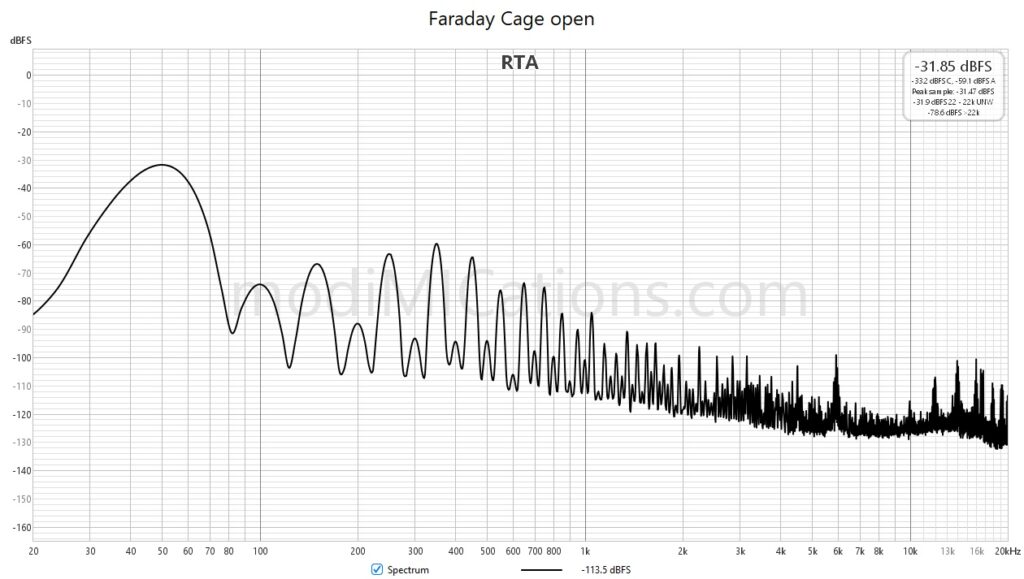When measuring condenser microphone circuits without the metal microphone housing or the head basket installed, you will immediately discover the sensitivity of the circuit for mains hum. This is simply due to the extremely high input impedance of the JFET or Tube input stage, measuring >100 MΩ or more, which is sensitive to picking up AC electric fields, even at low frequencies. This hum can easily be prevented by placing the electronics in a Faraday cage. I have made such a cage from an old steel toolbox, pictured below. Some people use a metal cookie jar. My first Faraday cage was an aluminum photo suitcase, but that didn’t work too well. Perhaps the circuit also picked up magnetic fields, which are better shielded with a steel box.

On the left side, there is a female XLR, to which you can apply the test signal and which connects to the microphone circuit via two test clips. There are two male XLR connectors on the other side of the box. The top one is a differential XLR connection that goes to the output of your microphone circuit and also provides the phantom power. You will normally connect this to the microphone input of your Audio Interface or Audio Analyzer. The other XLR connects internally to test clips, which can be used to measure a signal on your circuit. This is a single-ended connection with XLR pin 3 connected to pin 1. Pin 1 ground was connected to the Faraday cage on all XLRs.
The effect of the Faraday cage, or shield, can be easily demonstrated. I placed the PCBA from an MXL991 microphone in the Faraday cage and connected it to the microphone input of my Audio Analyzer. On the MXL991 PCBA, a 39 pF capacitor was soldered from the input to signal ground, mimicking the capacitance of a capsule. In the first RTA plot below, you see the FFT with an opened Faraday shield. In addition to the 50 Hz mains hum and its harmonics, you also see a lot of other interference that is picked up. In the second one, with the lid closed, all the interference is gone. At the very bottom is a photo of the MXL991 PCBA in the Faraday cage.


